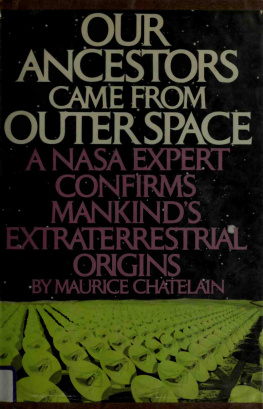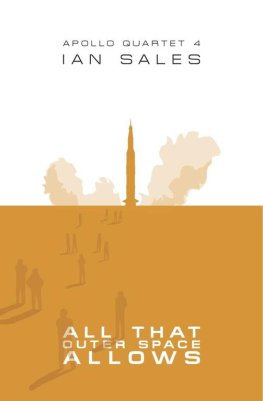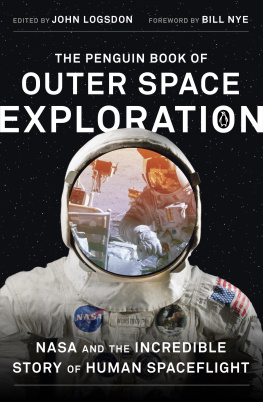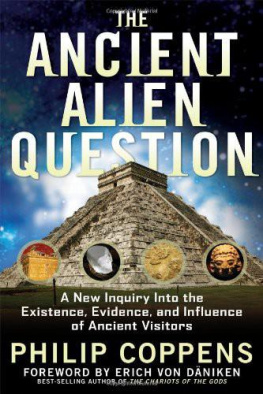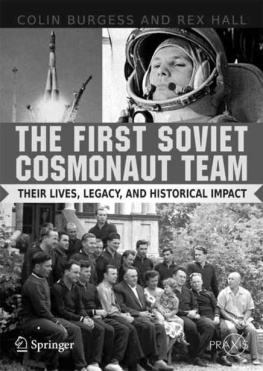INTRODUCTION The Apollo Spacecraft
TWELVE YEARS AGO I was living in San Diego, California. I had come there from Casablanca in 1955 with my wife and my three sons at the time when Morocco was becoming independent. After seven marvelous years in Casablanca I had no wish to return to my native France.
One lived well in Morocco, and we had many friends there. Among them a few intimates who worked hard in the daytime and lived it up at night. That was exactly the kind of life that appealed to me. I worked ten hours a day and had five businesses going simultaneously, including a venture in television that really interested me.
We spent seven years in Casablanca, and all went well when suddenly, under pressure from the United States, France decided to pull out of Morocco and grant it independence.
In just a few weeks a well-organized and prosperous country was turned into unimaginable social and economic chaos. Even the most secure businesses went bankrupt because no one paid what was due, and it wasnt even possible to send children to school because they could have been killed in the streets. Disgusted and sorry about being a Frenchman, I thought it better to leave, the sooner the better. But first we had to know where to go.
One of our best friends in Casablanca at that time was an American of Greek ancestry, who, as the president of the United States Chamber of Commerce in Morocco, had helped me a great deal in the past. He was to be even more helpful now, since he was also the American vice consul in Casablanca.
I went to see him and asked for advice. He said I should have my head examined if I ever dreamed of returning to France, already crowded with refugees from Indochina and North Africa. His advice was to go to the wide, open spaces of California. A mutual friend, now residing in Beverly Hills, would certainly be glad to sponsor me and my family and give the necessary guarantees to the United States immigration authorities.
I was tempted to follow his advice. I spoke English well enough, but my wife, who had for some strange reason studied German as second language in school and had three small boys, was not so easily persuaded.
I finally prevailed, and the very next morning all of us went to the American Consulate to sign the immigration papers and to receive warm recommendations given to our family by my Greek-American friend.
My decision to move to America proved to be right. For the next twenty years I worked for a number of aerospace organizations and industries and was supported by the United States Navy, the United States Air Force, and NASA. I was even reimbursed by the United States Government for the cost of moving my family to the United States, though it took a while to achieve that.
If ever I regretted coming to the States, it was never for professional reasons, because working in California is so much more agreeable than it is in France, where I would never have succeeded as I did here.
After having lived in Beverly Hills for about a month and having found that it wasn't too difficult to find work in the electronic industries, I decided to look for a home in San Diego, where the rents were more reasonable and the landscape reminded me of the Cte d'Azur of southern France.
My first job was a three-year stint as an electronics engineer with Convair Astronautics. Convair was then building the delta-wing F-102 and F-106 fighter planes and the Atlas intercontinental ballistic missile for the military, which were successes, as well as a commercial passenger plane that was not, even after its name had been changed several times.
I started working in telecommunications, which I knew well, and was soon shifted to telemetry, which I knew little about, until finally all my work was with radar, which I didnt know at all. But after three years I had become an expert in each of these fields and was even making a name for myself. I had published some technical articles and had given a lecture. But then Convairs business turned sour. Its commercial airplane still did not sell and the Air Force started cutting contracts, but luckily for me, a competitor of Convair, the Ryan Aeronautical Company, that had built Charles Lindberghs airplane in 1927, decided to start an electronics division and began luring specialists away from Convair.
So it was that in 1959 I landed at Ryan Electronics as head of the electromagnetic research group, in charge of engineering new radar and telecommunication systems. It was there that I finally had a chance to use my imagination and create new communication systems for which I received eleven patents. That was the great era of electronics, a time that will never come again. Ryan was actually a small company and did not build airplanes or missiles. It specialized in building drones, small pilot-less airplanes that were a big success. The Air Force used these drones for fighter-pilot training and shot them down faster than we could build them. At a certain time we even started repairing the least damaged drones, quite contrary to certain principles of American business.
Ryan was also building the worlds best radar navigation systems, which gave the most precise readings of aircraft altitude, ground speed, distance covered, and exact aircraft position. One of these flight instruments enabled a military airplane to fly on automatic pilot from San Diego to Washington, D.C., missing its target by less than two hundred yards.
Thus I turned out to be a specialist in electronic navigation. One of my patents an automatic radar landing system that ignited the retro rockets at a given altitude was used in Ranger and Surveyor flights to the moon, the latter spacecraft making soft landings without suffering damage.
But even Ryan didnt do well financially. The drones sold like hotcakes but the Air Force needed more than we could supply them, so Ryan lost one contract after another within only a few weeks, something that is typical of the American way of business. As a result Ryan was in financial difficulty. It became clear that I would have to look for another job. Since Convair, the only aerospace company in San Diego besides Ryan, by now faced even greater economic difficulties, I had to go up to Los Angeles to find a suitable position. The job situation was much better there, but I did not want to move nearly a hundred miles north to Los Angeles for several reasons. First of all, Los Angeles is not a city like San Diego. Los Angeles is a chain of industrial suburbs stretched in fine over sixty miles and nobody likes to live there if he can help it. Besides, we had just bought a brand new home in San Diego, with a magnificent view of the bay and we had no wish whatever to go and live in the notorious smog of L.A.
So it was decided that my wife and my three sons, together with our huge Newfoundland retriever, Katanga, would stay in San Diego and that I would drive to Los Angeles on Monday and return on Friday, as many of my friends had been doing. It was far from my ideal way of life, but what else could I do?
It so happened that at the precise moment when Ryan and Convair were having their great difficulties in San Diego, North American Aviation was building a new gigantic aerospace plant for 30,000 employees in Downey, a southern suburb of Los Angeles, in the hope that it would receive the Apollo development and construction contract from the United States Government, the space project whose goal was to land a man on the moon.
To start building such vast production facilities before receiving a contract seems foolhardy but very American, because how could you hope to get the contract if you didnt have the factory first to show to the customer? But North American had no doubts that it would get the bid. The company had cemented its relations well with Lyndon Johnson, at that time the Vice President of the United States and in charge of the space program.

